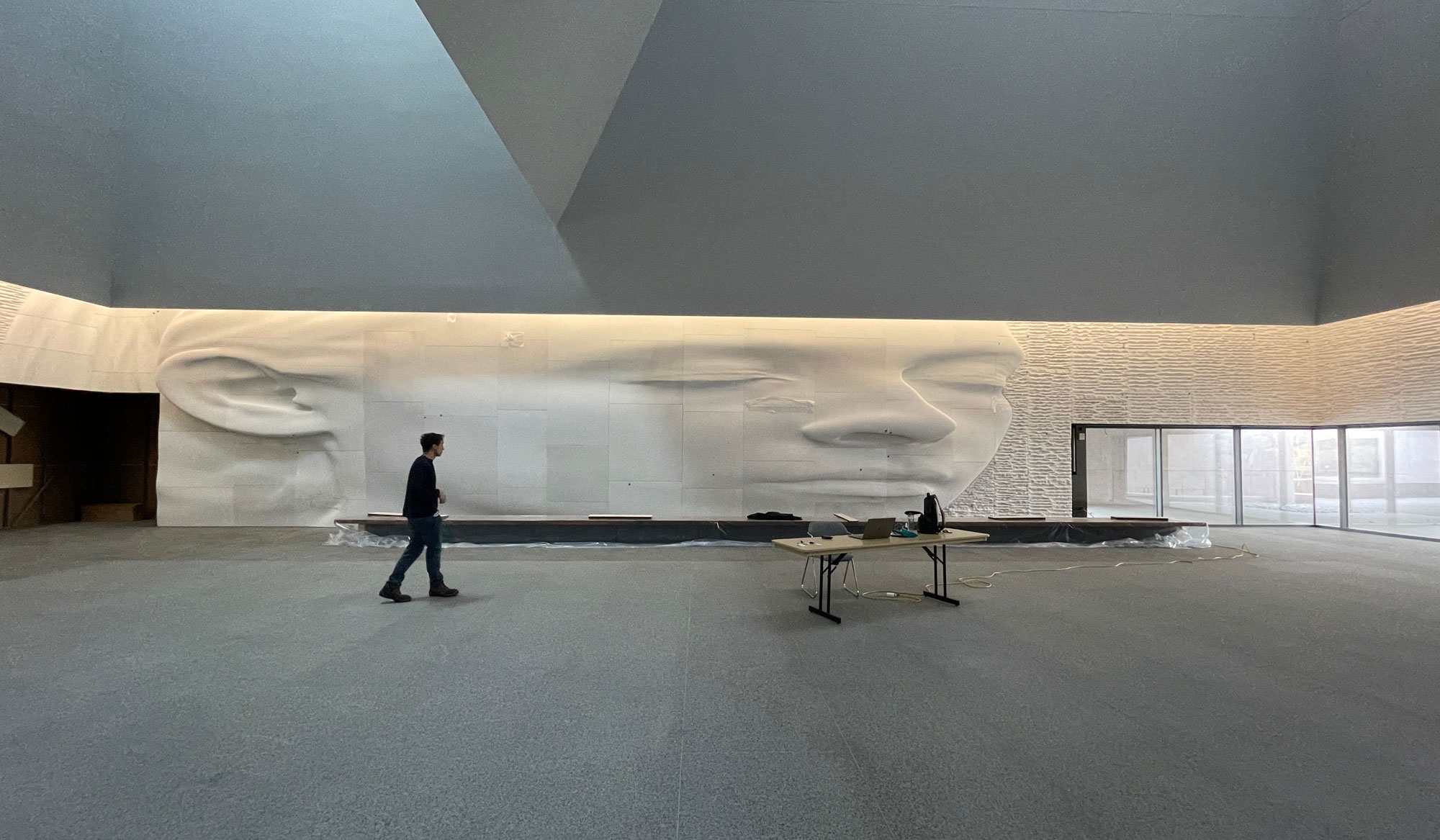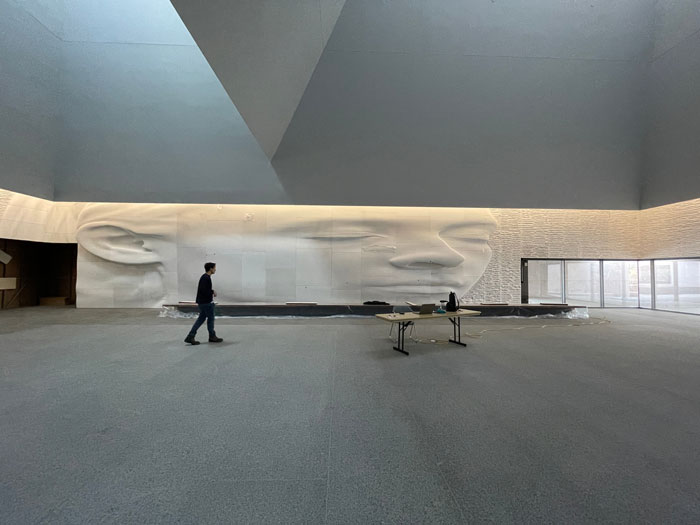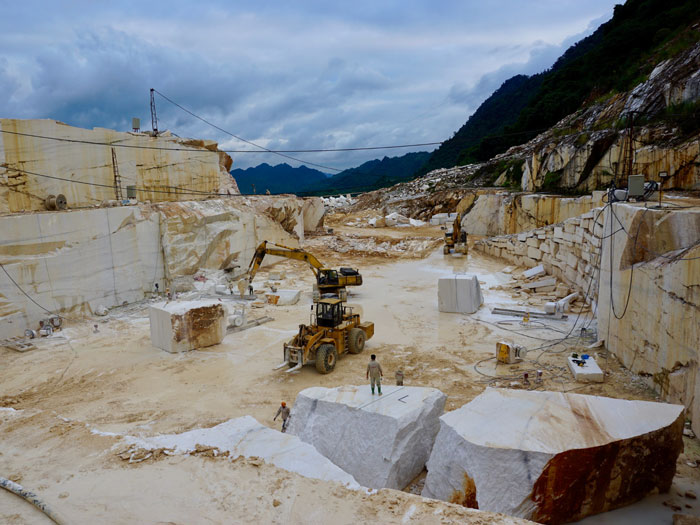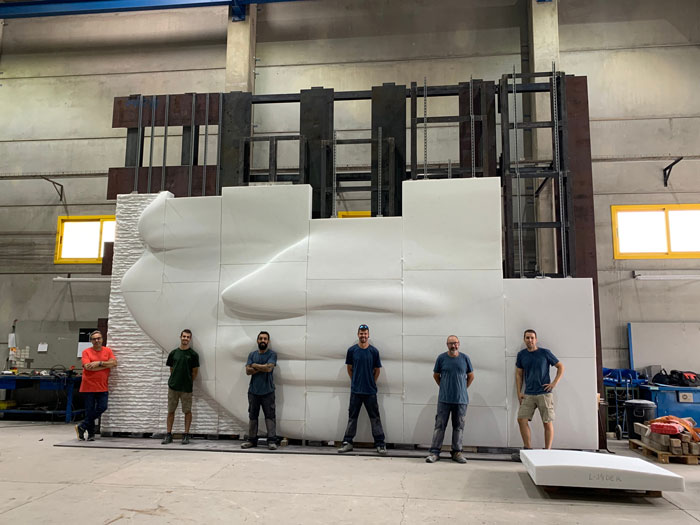
“Utopia,” Jaume Plensa’s majestic sculpture at the Frederik Meijer Gardens & Sculpture Park
In the summer of 2018, we received a highly exciting commission, one that would require us to give our utmost to produce it and where we would especially appreciate the craft of stonemasonry. We would also have the opportunity to be part of an incredible project, one that would reach people worldwide. This is particularly thrilling when the artist in question is Jaume Plensa, one of the most prominent artists of our time.
With “UTOPIA,” the artist’s aim is to symbolize humanity’s capacity to share. As he himself explains: “Utopia is our human landscape, a space to embrace humanity and our collective dreams.”
“It is the age-old dream of being able to coexist in a civilized manner, as it seems very difficult to create spaces of freedom and places to share everyone’s dreams.” – Jaume Plensa
The inauguration ceremony and public opening took place on November 30, 2021, at the Frederik Meijer Gardens & Sculpture Park in Grand Rapids, Michigan, USA.
Naturally, we cannot help but share how we experienced the entire process of creating this work and what it meant to us at Barbany.
The sculpture, elegantly carved from white marble, is a collection of four portraits from different origins: Marianna (Catalonia), Julia (Basque Country), Laura (China), and Wilsis (Dominican Republic), each of them measuring 6.5 meters in height and 26 meters in length. These portraits welcome visitors inside the Welcome Center designed by Tod Williams and Billie Tsien.

In this case, the faces of the sculpture extend horizontally, in contrast to Jaume Plensa’s characteristic vertical heads. This is no coincidence. The effect aims to convey a sense of landscape to ensure that the work integrates with the park’s surroundings, merging art with nature in a space that exudes peace and serenity.
The “Utopia” project had to be executed in a very pure, nearly vein-free white marble, one that not only harmonized with the surrounding architecture but also offered a subtle interplay of light and shadow, further enriching the viewers’ experience. “Utopia” is the largest piece the artist has ever created in stone, and it required 400 tons of white marble to materialize its 398 components. “Utopia” és la peça de major grandària que l’artista ha signat en pedra i es van necessitar 400 tones de marbre blanc per materialitzar les 398 peces que ho componen.
We searched for this material all over the world and eventually managed to locate it in Vietnam. Arnau Barbany traveled there, spending two weeks selecting the marble and quarry among the various options.

After choosing the most suitable marble blocks, we had them cut to size and transported to Catalonia in 25 shipping containers, a process that took half a year.
Once we received them at our workshop in Llinars del Vallès, we sculpted the work for nearly two years, a record time, even amidst the COVID pandemic.
To meet the desired deadline, and with other ongoing commissions like the Tower of Jesus Christ at the Basilica of the Sagrada Familia in Barcelona, we had to install two exclusive robotic machines for this project, in addition to those we already had. We used two 5-axis diamond wire cutters, five robots, two 5-axis work centers, and a CNC cutting machine with a disc. Ten artisans and three technicians also worked on this project.

To certify the quality of our work, we conducted various partial presentations of the artwork. Plensa’s technicians and the artist himself validated this during their weekly visits to our workshop.
Behind this project lies a unique sculptor, Jaume Plensa, and an exceptional team of professionals who have made an extraordinary work possible.
For the entire Barbany team, it has been an immense pleasure to embark on this adventure, and we are grateful for the opportunity to be part of an experience like this. Particularly for Arnau Barbany, who enjoyed every step of the project: production study and organization, research and marble procurement in Vietnam, production at Barbany, and installation in the United States.